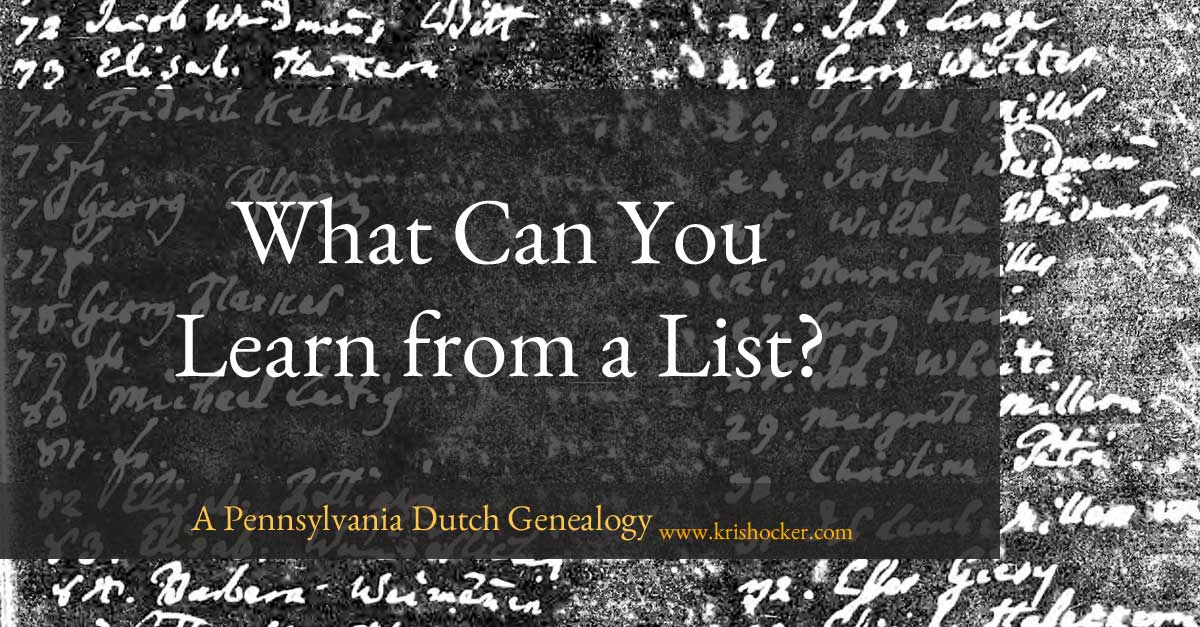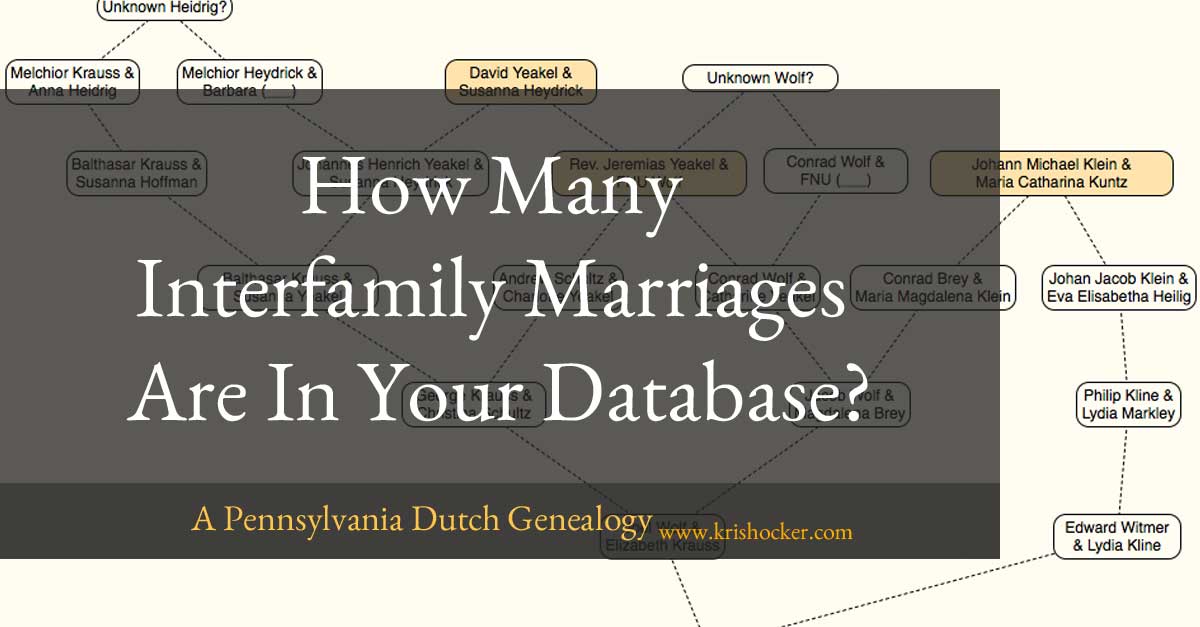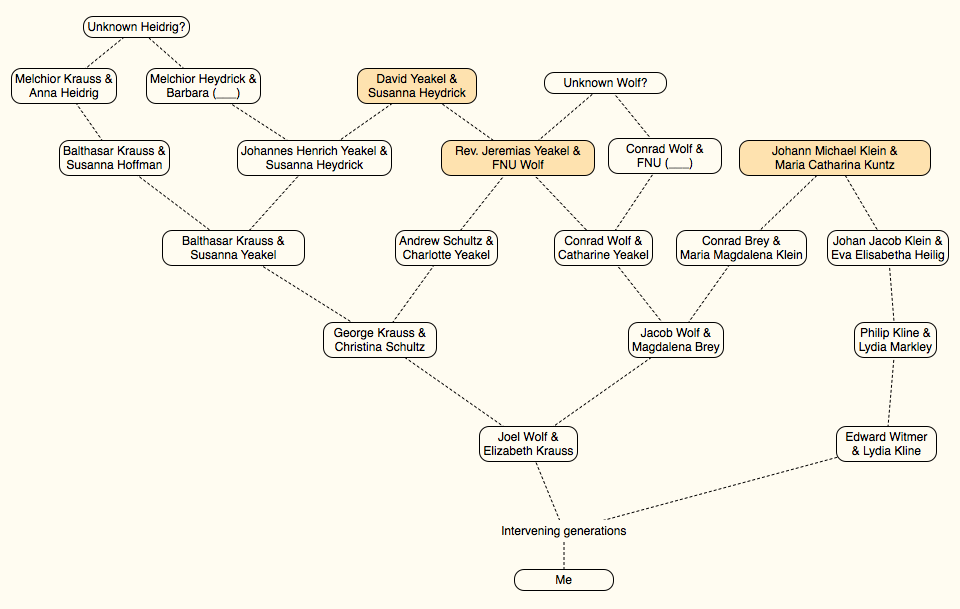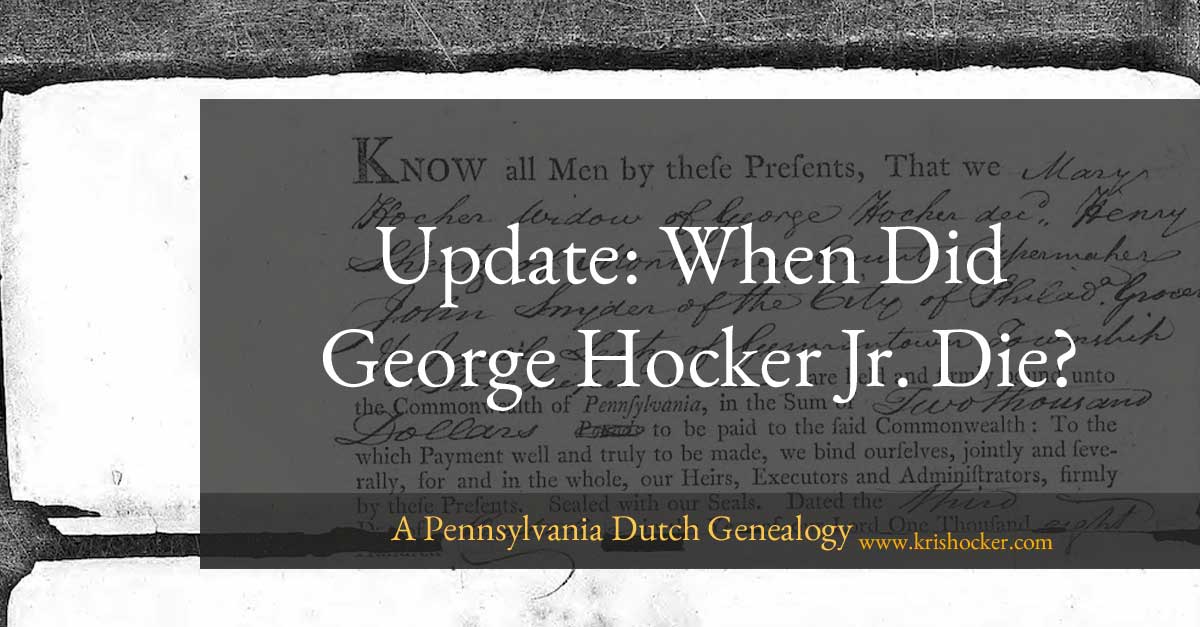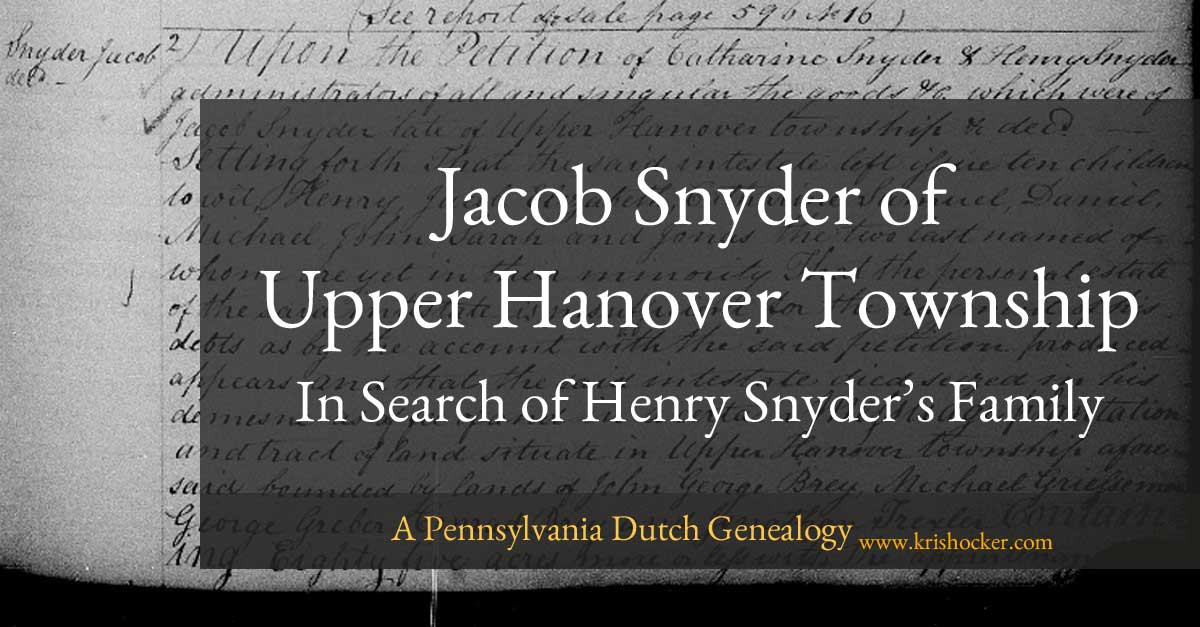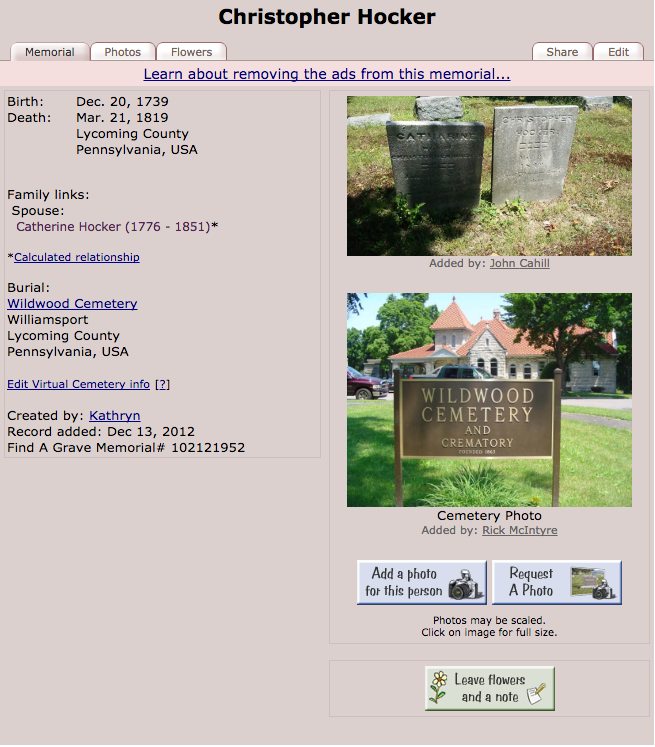What Can You Learn from a List?
If you’ve been doing genealogy for a while, I’m sure you’ve come across lists. You know those pesky records you thought would actually tell you something about your ancestor and instead you found were little more than a laundry list of names.
What help is that?! How can you even tell if that name refers to your ancestor when all you’ve got is a name on a list of names?
Just what can you learn from a list? Quite a lot, actually.
Working from communion lists, I was able to determine several facts about specific relatives. For instance, I was able to narrow down the marriage date of Anna Christina Lang, daughter of Johann Michael and Christina (Hacker) Lang.
Anna Christina (Lang) Stober
I have not been able to locate a marriage record for Christina and her husband Johann Wilhelm Stober. To the best of my knowledge, marriage records for the church they attended do not exist. However, they both attended communion at Emanuel Lutheran Church in 1775.
On August 27, the 11th Sunday after Trinity, Wilhelm is listed with his parents and siblings, Valentin, Friderich, Barbara, and Christina.1 “Christina Langen” is also included separately on the list. I know this isn’t her mother Christina (Hacker) Lang or her sister-in-law Christina (Stober) Lang because both are also included on the list—her mother with husband Michael and (future) sister-in-law alone and separate from her brother Michael Lang.
The very next communion list was recorded on 26 November, the 24th Sunday after Holy Trinity. This list includes “Wilhelm Stover and wife Christina.”2 This tells me that William and Christina were married—likely at Emanuel Lutheran sometime in the ten weeks between 27 August and 26 November.
Maria Elisabetha (Weidman) Hacker
I don’t have a death date for Maria Elisabetha (Weidman) Hacker and since she was most likely buried on the family farm, I don’t have a gravestone to check either. She was alive at the time her husband’s estate was settled in the Lancaster County Orphan’s Court in 1782. She was awarded £12 yearly out of her dower share of the Hacker farm, which amounted to approximately £200.3 I know she was alive as of 2 August 1790, because she was listed as “Widow Hocker” in the 1790 census enumeration of Cocalico Township.4
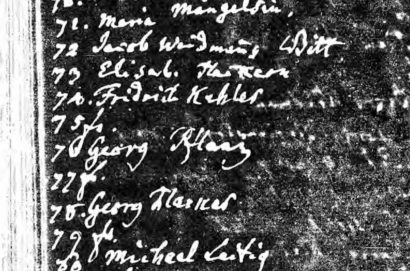
Elisab. Hacker (#73) in 1806 Communion list
But when did she die?
By examining communion lists, I determined that she was still alive and attending communion at Emanuel Lutheran Church until sometime after 28 September 1806.5 At that time, both her daughter and granddaughter named Elisabeth had already married and so would not have been listed under their maiden names. The only other Elisabeth Hacker in the area and old enough to be included would have been her son Jacob’s wife and she was listed with her husband (#58 & 59, see below). Furthermore, Elizabeth (#73) was listed directly after “Jacob Weidman Witt.” This most likely referred to Elisabeth’s brother Jacob’s widow, Barbara (Huber) Weidman. Jacob died 20 December 1802.6 Barbara survived until 1828.7 I did not find Elisabeth listed on subsequent lists—the next being on Misericordia Sunday 1807, the 4th Sunday of Easter or, I believe, 19 April 1807.
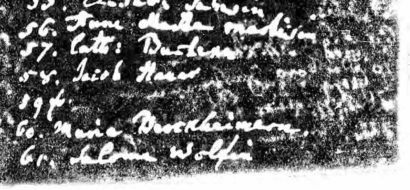
Jacob Hacker & frau (#58 & 59)
The important thing to remember with lists is context. In addition to the standard questions of what type of list is it, who made it, why, where, and when, we should also ask questions specifically about the list based on what we know about lists of this type for that location. Who’s on the list? Who could or should be on the list? Who’s not on the list? How does the list change over time? The answers to these questions provide clues that help us to identify the people on the list and therefore draw conclusions about the people on the list.
While I couldn’t get exact dates for events from the lists, the information they provided helped me to narrow down the possible dates. Christina married between 27 August and 26 November 1775. Maria Elisabetha (Weidman) Hacker died sometime after 28 November 1806 and possibly before 19 April 1807.
1/1/17: Updated to include images and minor edits.

